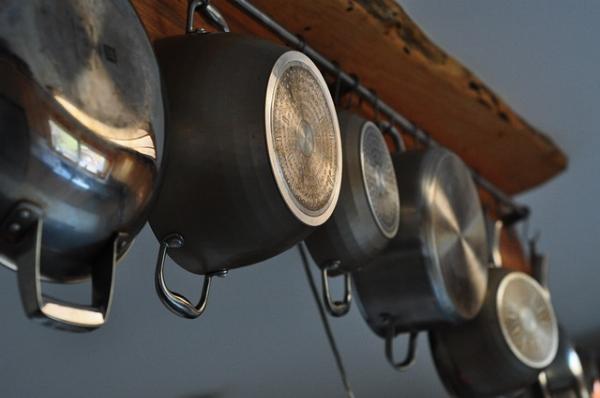The Science Behind Cast Iron: Understanding Heat Retention and Distribution

Strong 8k brings an ultra-HD IPTV experience to your living room and your pocket.
Science is all about practicality. Thus it is highly essential to give a practical explanation of one of the oldest cookware in the world — cast iron cookware.
Cast iron cookware has brilliant heat retention and distribution. This cookware is used for cooking dishes that require the most retention of flavor such as red meat, khichdi, etc.
1. Heat Retention: Cast Iron cookware has high thermal mass thus they absorb and store heat the most. They are great conductors of heat. Allow stability in your cooking with dense cast iron.
2. Specific Heat Capacity: The specific heat capacity of a cast iron cookware is pretty high which means it can store a lot of heat energy. By doing so it can help cooking at a uniform temperature. Of course, you can adjust the temperature as and when required.
3. Heat Distribution: As said earlier, cast iron is a sustainable conductor of heat. Although it has comparatively lower thermal conductivity compared to metals like aluminum or copper. It takes time to heat up or cool down which makes it a reliable cooktop to cook artisanal dishes like naan bread.
The thick cast iron tawas are usually heavy. They are best for batter-centric cuisines like dosas or pancakes. Whenever a mild sort of tandoor or browning is desired, cast iron is indeed a savior.
It has several good reasons to be trusted by generations as it prevents burning or undercooking and retains most of the flavor. The chef can have more control over the cooking process. Currently, apart from our home kitchens, we can see the use of Iron cookware or Cast Iron Woks in street food joints where they make the freshest dosas, noodles, and kathi rolls.
Seasoning and Its Role
1. Non-Stick Surface
Unlike Triply cookware, cast iron cookware does not come with a natural nonstick, rather one needs to manually season it with a thin layer of oil. Then once heated, the pan creates a polymerized layer that acts as an absolute nonstick. You can cook the healthiest omelets or moong chilas on it.
This seasoned polymerized layer not only protects the tawa from rust but also influences heat control. You will know when the seasoned pan is ready to be used when the heat creates a bluish ring around the middle of the pan.
The surface becomes very smooth and there will be no food stuck on it. Do not use a silicone spatula on cast iron cookware as they can melt due to the high heat. Use the metal karchi or a wooden spatula.
2. Maintenance of Heat Retention
Season your cast iron regularly to always have a naturally non-stick surface handy. A well-seasoned cast iron cookware is durable, and cooks food uniformly, smoothly, and very fast. Thus they have been labeled to be efficient historically.
Practical Benefits of Cooking in Cast Iron
1. Versatility
The spectrum of culinary experimentation is limitless on a cast iron cookware. You can sear your deli meat, your breakfast bacon, or even your butter toasts in a cast iron pan. A medium pizza? Sure! Aloo ke paranthe? Ah, in minutes. Paneer barbeque or Grilled fish? In a jiffy!
2. Energy Efficiency
A cast iron cookware retains heat for the longest time cooks and manages it the most effectively. The user must lower the heat once the cast iron is fully heated. This can save them energy and reduce the chances of overcooking.
Note: IndiBlogHub features both user-submitted and editorial content. We do not verify third-party contributions. Read our Disclaimer and Privacy Policyfor details.








